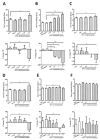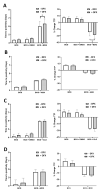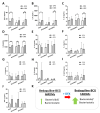The Iron Chelator Desferrioxamine Increases the Efficacy of Bedaquiline in Primary Human Macrophages Infected with BCG
- PMID: 33805837
- PMCID: PMC8001338
- DOI: 10.3390/ijms22062938
The Iron Chelator Desferrioxamine Increases the Efficacy of Bedaquiline in Primary Human Macrophages Infected with BCG
Abstract
For over 50 years, patients with drug-sensitive and drug-resistant tuberculosis have undergone long, arduous, and complex treatment processes with several antimicrobials. With the prevalence of drug-resistant strains on the rise and new therapies for tuberculosis urgently required, we assessed whether manipulating iron levels in macrophages infected with mycobacteria offered some insight into improving current antimicrobials that are used to treat drug-resistant tuberculosis. We investigated if the iron chelator, desferrioxamine, can support the function of human macrophages treated with an array of second-line antimicrobials, including moxifloxacin, bedaquiline, amikacin, clofazimine, linezolid and cycloserine. Primary human monocyte-derived macrophages were infected with Bacillus Calmette-Guérin (BCG), which is pyrazinamide-resistant, and concomitantly treated for 5 days with desferrioxamine in combination with each one of the second-line tuberculosis antimicrobials. Our data indicate that desferrioxamine used as an adjunctive treatment to bedaquiline significantly reduced the bacterial load in human macrophages infected with BCG. Our findings also reveal a link between enhanced bactericidal activity and increases in specific cytokines, as the addition of desferrioxamine increased levels of IFN-γ, IL-6, and IL-1β in BCG-infected human monocyte-derived macrophages (hMDMs) treated with bedaquiline. These results provide insight, and an in vitro proof-of-concept, that iron chelators may prove an effective adjunctive therapy in combination with current tuberculosis antimicrobials.
Keywords: BCG; antimicrobials; drug-resistant tuberculosis; host-directed therapy; interferon-γ; iron chelation; iron metabolism; tuberculosis.
Conflict of interest statement
The authors declare no conflict of interest.
Figures




References
-
- WHO . Global Tuberculosis Report 2020. World Health Organisation; Geneva, Switzerland: 2020.
MeSH terms
Substances
Grants and funding
LinkOut - more resources
Full Text Sources
Other Literature Sources
Medical

